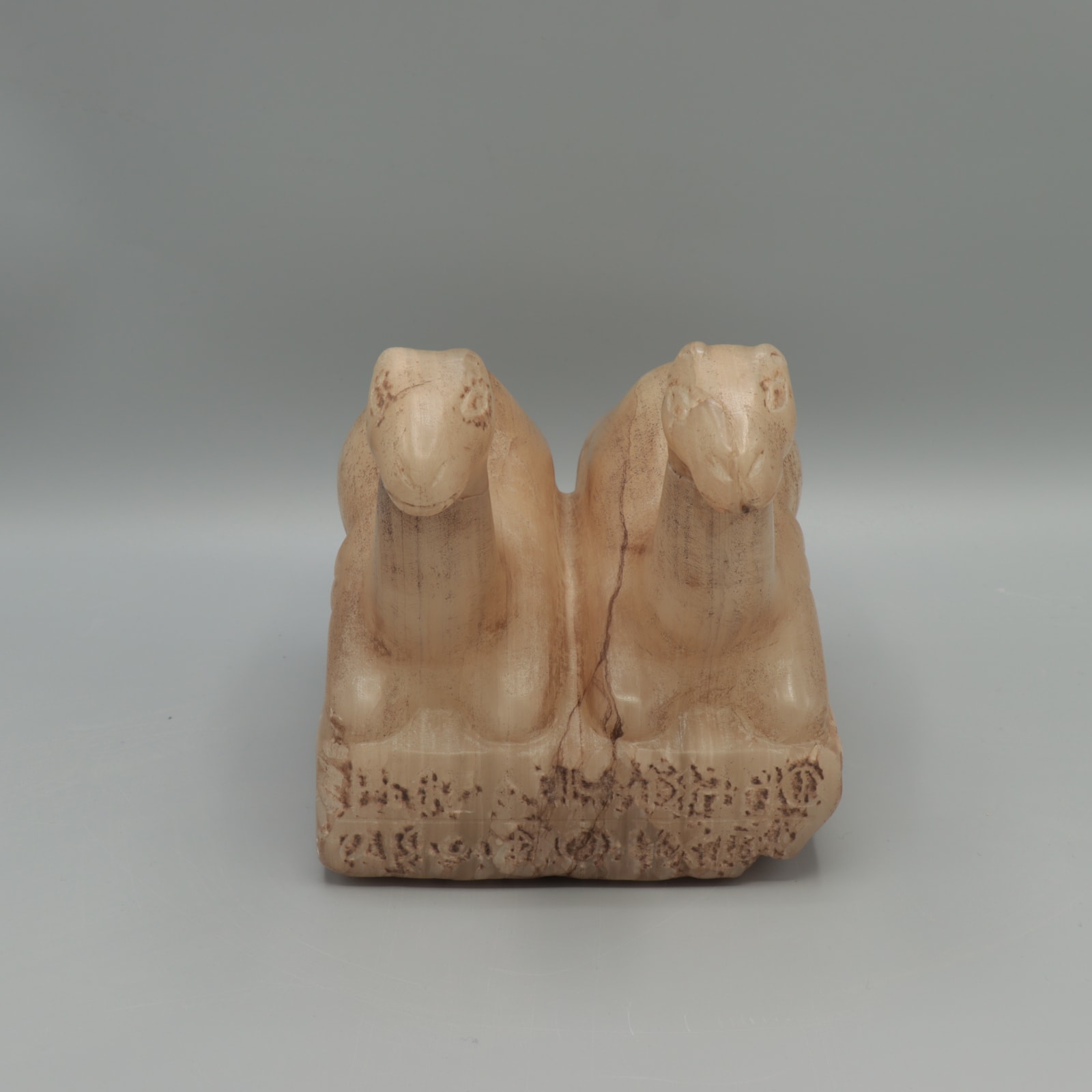Sabaean Alabaster Camels, 7th-5th century BCE
Alabaster
height 14.5 cm
height 5 3/4 in
height 5 3/4 in
EL.0035
The Sabaeans were an ancient people who lived in the kingdom of Sabaʾ, in what is now Yemen. The exact date of the foundation of this kingdom is uncertain, but...
The Sabaeans were an ancient people who lived in the kingdom of Sabaʾ, in what is now Yemen. The exact date of the foundation of this kingdom is uncertain, but it is thought to have begun between the 12th and 8th centuries BCE. It was conquered by the Himyarites in the 1st century BCE, then after a period of changing leaderships, including the emergence of the Middle Sabaean Kingdom, the Himyarites took over again in the 3rd century CE. The Romans later called the area which the Sabaeans occupied ‘Arabia Felix’ (fertile Arabia) because it experienced more rainfall than the other areas of the Arabian Peninsula (‘Arabia Deserta’ and ‘Arabia Petraea’) and was therefore good for farming. The Sabaeans were also involved in the trade of spices, and particularly in frankincense and myrrh.
This sculpture shows two camels sitting peacefully side by side, on an inscribed base. They are almost identical in form, with their legs folded underneath them and their heads raised on extended necks. They each have one hump, showing that they are dromedary camels (also known as ‘Arabian camels’). Their bodies are fairly simplified, and their facial features are marked with only a few lines. The natural markings of the stone have been aligned so that they pass vertically across the faces and backs of the animals. Camels have been domesticated in the Arabian Peninsula for around 4000 years, and they would have been an important animal to the Sabaeans because of their ability to transport people or items for long distances. They could also have been used for their meat and dairy products. The platform on which the camels are seated is inscribed on three sides with two horizontal lines of script, probably ancient South Arabian script, which the Sabaeans used for monumental inscriptions.
This sculpture shows two camels sitting peacefully side by side, on an inscribed base. They are almost identical in form, with their legs folded underneath them and their heads raised on extended necks. They each have one hump, showing that they are dromedary camels (also known as ‘Arabian camels’). Their bodies are fairly simplified, and their facial features are marked with only a few lines. The natural markings of the stone have been aligned so that they pass vertically across the faces and backs of the animals. Camels have been domesticated in the Arabian Peninsula for around 4000 years, and they would have been an important animal to the Sabaeans because of their ability to transport people or items for long distances. They could also have been used for their meat and dairy products. The platform on which the camels are seated is inscribed on three sides with two horizontal lines of script, probably ancient South Arabian script, which the Sabaeans used for monumental inscriptions.
